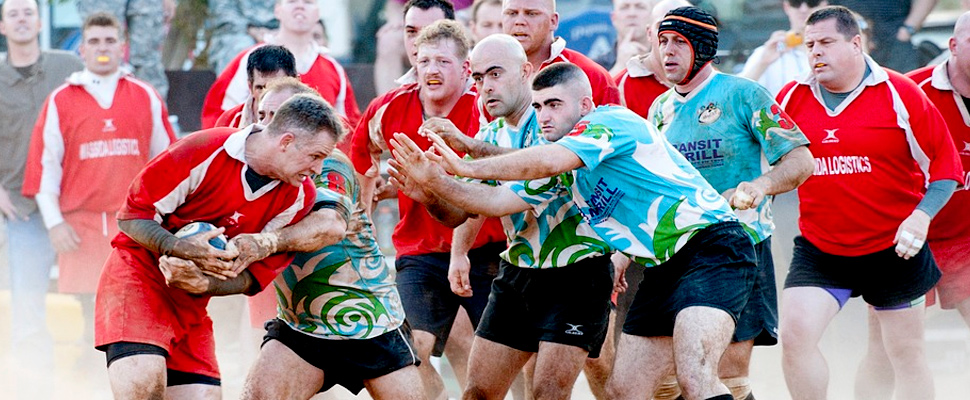Rugby-‘Waste sweat’ and humidity a test for players at World Cup
This year's Rugby World Cup, the first to be held in Asia, will produce many unique challenges for the world's top players but one of the biggest might be Japan's varied climate.

Rugby game. Reference image / Pixabay
Reuters | Jack Tarrant and Yoko Kono
Listen to this article
Leer en español: Rugby: el clima es una prueba para los jugadores en la Copa Mundial
With the Sept. 20-Nov. 2 tournament being held during Japan's typhoon season and high humidity still a factor in the Japanese autumn, teams are preparing for stifling, sweaty conditions.
While this might mean a first World Cup where the Pacific island nations enjoy any advantage, some northern European teams have been taking measures to mitigate the impact.
England has been in Italy to prepare in similar conditions, while Ireland has been training wearing plastic vests to increase the amount they sweat.
According to Tokyo-based dermatologist Tomoko Fujimoto, an expert on perspiration, the earlier teams arrive in Japan to become accustomed to the climate the better.
"Athletes, especially those coming from overseas to this high temperature, high humidity environment, need to train one to two months in advance to avoid experiencing heatstroke," Fujimoto told Reuters.
"So, it makes sense that they come early to get used to the environment."
Most of the teams are only arriving in Japan one or two weeks before their opening matches.
"Try to imagine the worst environment possible and try to train at a similar place," added Fujimoto.
"It is a burden for your body if you move to a location where there is a very different average temperature.
"It is possible that unless you are prepared enough, the (sweat) glands will not be working properly by the time of a match."
Also read: Soccer players on the bench … of the accused
Changing temperatures
During England’s training camp in Treviso in July, where humidity was as high as 80-90%, Mike Brown said the conditions were tough, complaining that the humidity did not allow sweat to evaporate as normal off the skin.
"It's hard to keep your core temperature low because you are sweating all the time," said the outside back, who was left out of the World Cup squad.
"It just sits on your skin and then heats up even more so you can't get your body temperature down."
Fujimoto agreed this might be a difficult issue in humid conditions, where 'waste sweat' accumulates and cannot evaporate.
"When humidity is too high, water does not become heat which means sweat would not evaporate," she explained.
"In Japan, we have conditions such as high temperature and humidity and in case of typhoon season, humidity levels get raised … it is possible that temperature and humidity affect the controlling of body temperature for athletes."
"When it is still in water form, it is called 'waste sweat'."
The World Cup is set to be one of the most tightly contested in history, not least because, for the first time, northern and southern hemisphere sides cannot claim a home advantage regarding weather and field conditions.
This is likely to be amplified by differences in conditions at host cities, ranging from Sapporo in the north to Fukuoka over 2,000 kilometres to the south.
Fukuoka has been seven degrees Celsius warmer and significantly more humid than Sapporo in September on average over the past five years, according to the Japan Meteorological Agency.
This will present challenges for teams like England, who will be based in Miyazaki, which boasts a subtropical climate, but play their first match against Tonga over 2,000 kilometres to the north in Sapporo.
They then face the United States in the central city of Kobe just four days later.
These dramatic changes in climate will be hard to deal with, Fujimoto believes.
"The human body cannot accommodate sudden changes of environment," warned Fujimoto.
"So, in order for your sweat glands to work, you need to train them."
Also read: NFL: 5 injured so far this preseason
Sweltering heat
None of this is news to the rugby players at Nippon Sports Science University, who train throughout Tokyo's sweltering summer.
Training takes place early in the mornings but temperatures are still regularly over 30 degrees Celsius and the impact can be draining.
This weekend, the squad is relocating 200 kilometres north-west to the cooler climes of Nagano to escape the worst of the weather.
Coach Shuichi Hakihiro said it was a constant battle to keep his players hydrated.
"In terms of hydration, by the time you feel thirsty, it is too late," the 49-year-old said.
"Therefore, I tell the players that before getting thirsty, (they need to take) water."
"The trainers always carry salt and so sometimes they provide salt to the players.
Hakihiro said he always checked on the welfare of his players and asked them if they felt capable of playing in the heat before he started a training session.
The coaches at the World Cup will not have that option but must instead make sure their charges know what is coming when they arrive on Japanese shores next month.





